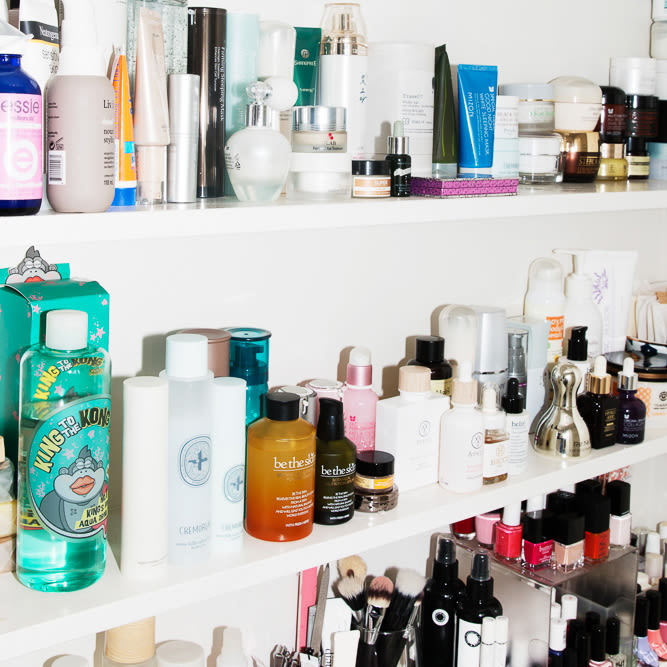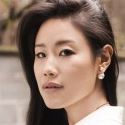If there's a trustworthy source when it comes to Korean beauty, it is Alicia Yoon. The Harvard Business School grad was already a trained aesthetician and full-time consultant by the time she had the idea to start Peach and Lily, a website dedicated to bringing the best of the Seoul-based beauty world to the masses. There's a lot of information out there on Korean skincare (and the multi-step routines it inspires), but that doesn't mean there aren't more questions to answer. Always eager to talk product, Alicia ran through some of the most pressing FAQs that come across her customer service desk on a daily basis. Got more questions? Leave 'em in the comments.
Since we launched Peach and Lily in 2012, we’ve received thousands of questions about Korean beauty and all that it entails from consumers and retailers alike. The general consensus is that the Korean approach to skincare can be as overwhelming as it is compelling. Given that so much of what we share—both products and content—can be unfamiliar and new, a big part of our job at Peach and Lily is provide information. That can be about ingredients, about rituals, or about skincare in general.
To give you a sense of what people are wondering (and what might be on your mind, too), we dug through our records to find the most popular K-beauty questions—along with their answers. Without further ado...
What's the next-big-thing coming out of Korea? What am I missing out on?
We think it's the mask movement. There are sheet masks, rubber modeling masks, splashing/patting masks, overnight sleeping masks, steaming masks, masks for various body parts, and the list goes on. We’re seeing sheet masks and overnight sleeping masks take off more Stateside, but are excited to see such an overwhelmingly positive response to all kinds of other masks, too.
We're seeing consumers and retailers really responding to this Shangpree Gold Premium Modeling Mask that is literally straight from a leading spa in Korea (the Korean government calls them the “model spa” for their renowned techniques). Basically, this luxurious goop is slathered onto the face, which turns into a malleable, rubbery texture that stays moist for up to 72 hours so that the mask doesn’t dry the face through reverse-osmosis but forces these nourishing and hydrating ingredients into the skin. It comes off in one piece, and you’re left with supple, super soft, glowing skin.
What is a pack vs. a mask vs. a sheet mask?
There are lots of exceptions to rules when vocabulary isn’t regulated. We interviewed 10 big and small beauty brands and asked their product developers and copywriters how they define these terms. To keep it simple, “pack” is typically interchangeable with “mask”—and sometimes the terms are combined. These usually reference wash-off masks, sleeping masks, or even DIY masks that don’t necessarily need to be washed off: for example, fresh cucumbers sliced up and placed on the face. Sheet masks are usually and most conveniently called out as sheet masks, but to further confuse matters, they are sometimes also just called masks. Your best bet is to read the directions to confirm how to best use the product. (As an FYI, US-based retailers are required to have ingredients in English and will usually try to provide directions in English, too, so the labels will be friendly for non-Korean-speaking maskers).
OK, so the Korean beauty routine seems really extensive. Do I really need to do it all?
In short, no. The Korean beauty routine isn’t defined strictly by the number of steps and including every single step. In Korea, people don’t really talk about a “ 10-step regimen' per se. Having said that, the routine tends to include more steps than what might be done Stateside. We interviewed 30 women in Seoul and 30 women in New York City on how many steps their skincare routine included, and the average number (rounding up) was seven and three, respectively. Broadly speaking, the steps that all the Korean women we interviewed all included were an oil-based cleanser, a moisturizer, and a SPF-product. The rest of the regimen was different for each person. The Korean beauty philosophy emphasizes personalization—developing a routine that fits your skincare needs, whether that's four steps or 15 steps, and a regimen that fits your lifestyle. After all, consistency is half the battle.
Why is Korean beauty so popular lately and why are there so many innovations coming out of Korea?
There was a tipping point in awareness around 2011 when BB cream, a product re-popularized in Korea, was first introduced to large US retailers. In the last couple of years, Korean beauty has gained better traction because of access via US-based e-tailers and major brick-and-mortar stores like Urban Outfitters and Sephora. I think the other part of it is that the Korean approach—respecting the skin and improving it from the inside out through innovating products—resonates with people. And then, of course, the products speak for themselves. Because Korea is a hyper-competitive market with some of the most globally demanding and skincare-savvy women, beauty brands in Korea need to deliver on all fronts to stay competitive. Couple this population of extremely skincare-savvy people with a high-technology platform (according to many sources, Korea has the fourth-fastest internet speed in the world; the US ranks 11th as a frame of reference) and super-connected digital communities, and the result is viral and prolific online (and offline) beauty conversations that democratize beauty in some sense. Many brands have told us that because consumers' expectations and thoughts about beauty brands/products are so quickly shared with each other, they constantly innovate to create more memorable and popular beauty products—all to meet and exceed the expectations of these skincare-savvy and communicative consumers.
How are the beauty products coming out of Korea actually different than what we see in the US or Europe?
The biggest differences are the formulations. Korean labs are well known for their ability to create incredible texture breaks—you have powders that turn into liquid without water; solids that melt instantly into an oil upon touch; liquids that turn into fibrous, solid pieces—all to enhance the application experience.
Then, within the formulation, there are differentiated niche ingredients that are included. This can range from fermented components to snail secretion filtrate. Products might use interesting bases like maple tree sap rather than water. There are a lot of ingredients that are well-loved by Koreans that aren’t as common Stateside and discovering that is probably the best part of all the beauty-hunting that we do.
I’m not Asian. What’s right for me?
With color for the face, it’s trickier. Cushion compacts from Korea, for example, typically come in two to three shades. I’d say that the range spans only from very pale skin with pink undertones to something a little more olive-toned. So, that’s a limitation, for sure. On the other hand, eye, lip, and blush products can be used by everyone, Asian or not.
When it comes to skincare, the products are great for all ethnicities. It’s more important to pick a product that’s right for your skin type (e.g. dry, oily, normal, acneic, etc.) and skin concerns. Once that’s a match, you’re all set.
I don’t want to lighten my skin. Do you have hyperpigmentation products that don’t bleach skin?
Rather than using ingredients like hydroquinone to address hyperpigmentation, I love the botanical alternatives like arbutin extract to deal with dark spots. Many Korean beauty products are labeled as “whitening,” but the formulation typically is focused on combatting hyperpigmentation and/or boosting radiance and not bleaching skin. These ingredients can suppress melanocytes to prevent excess melanin production with sun exposure. However, the result is skin that doesn’t look bleached, but rather more even-toned and radiant.
Are Korean beauty products more natural and organic? What does that even mean?
Yes and no. This question alone opens up a can of worms since these words aren’t regulated in beauty. To start with the yes part of the answer: Some of the most unique and most-loved ingredients coming out of Korea are straight from nature—like snail secretion filtrate or fermented botanicals. These can often take the place of synthetic ingredients that may not need to be included for product stability or efficacy.
Having said that, similarly to the US, “natural” and “organic” can mean many different things and, therefore—in some ways—don't stand for anything. When seeking products in these categories, our customers seemed to be seeking ingredients that are going to be somehow healthier—so the ingredients should rank super low on the toxicity and health-hazard scales. A good place to start is this database where many ingredients' toxicity/hazard levels can be looked up.
Not unlike natural or organic brands in the US, some Korean brands that market themselves in that vertical can include ingredients that actually are high in toxicity. So, yes, there might be more natural/organic brands in Korea because of the ingredients that are highlighted, but it’s hard to draw a conclusion that Korean brands are generally more natural (whatever that means) than anything else. Whether it’s a Korean or Western brand, when a beautiful formulation is created with every ingredient hitting a 0-3 out of 10 on the toxicity/hazard scale on EWG’s Skin Deep, they’re granted champion status à la Ilia, RMS Beauty, and Aromatica.
Can I combine Korean beauty products and rituals with what I’m doing now?
Absolutely. Layering products is big in Korea, and many of these products can be combined with what you’re currently using. Korean beauty products can be incremental additions to your routine and don't need to replace everything or anything that you’re currently using. Just watch out for mixing ingredients together that might be a bad combination, whether the products are all-Korean, all-Western, or a combination. And we always recommend swapping out or adding in one-to-two products at a time, testing them out for two-t0-three weeks rather than swapping out an entire regimen all at once.
—Alicia Yoon
Photo by ITG .
Want more from Alicia? Read her Top Shelf here.

